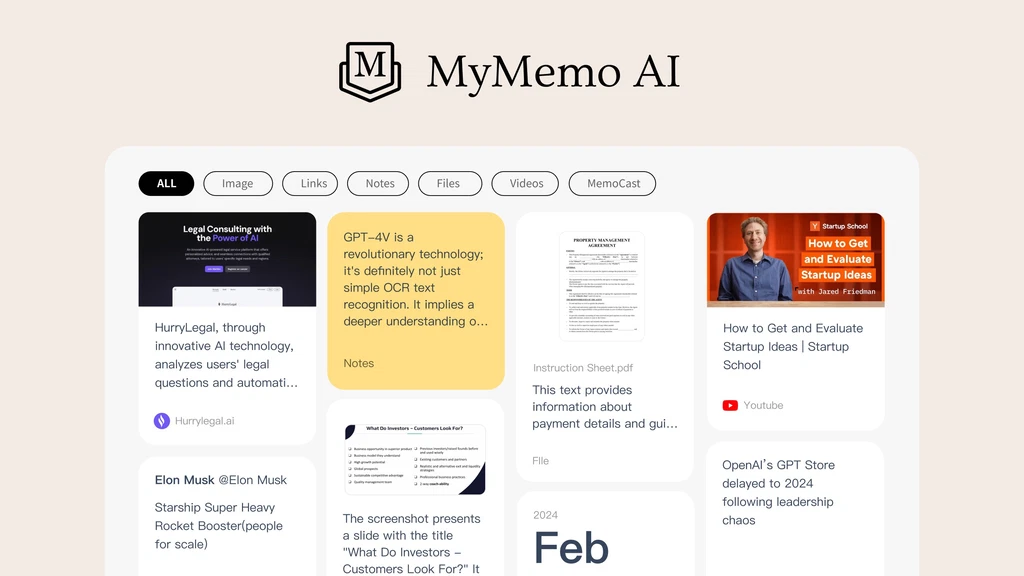Strategic Thinking Patterns for Success
In a world where success is often attributed to innate talent or hard work, Stanford University psychology professor Carol Dweck sheds light on a different perspective. Through her research on lifelong growth, she emphasizes the pivotal role of mindset in determining one’s achievements. This blog delves into the essence of strategic thinking patterns and their transformative power in shaping individuals’ paths to success.
The Mosquito Mindset
The ‘Mosquito Mindset’ serves as a compelling illustration of adaptability as a crucial factor in survival. Despite the seemingly insurmountable challenge posed by rainy environments, mosquitoes exhibit remarkable ingenuity in navigating through adversity.
When raindrops, each weighing approximately 50 times that of a mosquito, descend upon these delicate creatures, a fascinating dance of adaptation unfolds. Through the lens of high-speed cameras, researchers capture the intricate movements of mosquitoes as they evade the impact of raindrops. By tilting inward and rolling strategically, mosquitoes allow the hydrophobic surfaces of their wings and legs to repel the rain, akin to a lotus leaf shedding water effortlessly.
This behavior showcases the essence of adaptability – the ability to adjust responses to environmental stimuli swiftly and effectively. In the evolutionary race for survival, it is not always the strongest or the most intelligent that thrive, but those who can adapt to change with grace and resilience.
The key takeaway from the ‘Mosquito Mindset’ extends beyond entomology. It underscores the fundamental importance of adaptability in navigating the complexities of life. Just as mosquitoes evolve strategies to weather rainy days unscathed, individuals can cultivate a mindset that embraces change, innovation, and problem-solving as essential tools for personal growth and success.
The Bullet Hole Mindset
When it comes to making informed decisions, strategic thinking plays a pivotal role in personal growth and success. The Bullet Hole Mindset exemplifies the power of probability thinking in problem-solving, showcasing how analyzing data can lead to innovative solutions.
Strategic thinking involves assessing situations from a holistic perspective, considering all variables at play. By adopting a mindset focused on adaptability and innovation, individuals can navigate challenges with confidence and unlock their full potential.
One key aspect of the Bullet Hole Mindset is the emphasis on analyzing data to make informed decisions. Just as the statistical research group at Columbia University analyzed bullet hole patterns to protect American aircraft during World War II, so instead of reinforcing the areas with bullet holes, shouldn’t the protecting armor be installed on areas without bullet hole instead, like the engines, as these are the areas of the planes that if got hit, the planes will never even return back for the analysis to take place … isn’t it?!
Understanding the power of probability thinking is essential in problem-solving. By recognizing patterns and probabilities, individuals can anticipate outcomes and make strategic choices that lead to favorable results. This approach not only enhances decision-making but also fosters a proactive mindset geared towards success.
The Bullet Hole Mindset underscores the importance of embracing change and adapting to new information. By prioritizing strategic thinking and problem-solving skills, individuals can overcome obstacles and achieve their goals.
Adopting the Bullet Hole Mindset involves cultivating a mindset of resilience and adaptability. Just as planes were protected by adding armor to areas with the fewest bullet holes, individuals can fortify their own paths to success by focusing on areas of improvement and growth.
Personal growth is intrinsically linked to one’s ability to adapt and innovate. By honing problem-solving skills and embracing strategic thinking, individuals can navigate uncertainty with confidence and achieve personal and professional fulfillment.
The Book Return Mindset
The Book Return Mindset, as exemplified by the British Library’s innovative approach to relocating 13 million books, showcases the power of shifting perspectives and leveraging existing resources for effective outcomes.
By embracing a mindset focused on problem-solving and innovation, individuals can navigate challenges with confidence and unlock their full potential. The story of the British Library’s relocation highlights the transformative impact of strategic thinking and the ability to adapt creatively to monumental tasks.
Innovative Solutions Through Shifting Perspectives
The essence of the Book Return Mindset lies in the ability to view challenges from a fresh perspective and explore unconventional solutions. When faced with the daunting task of moving millions of books to a new facility, the British Library’s team encountered a roadblock in traditional cost-cutting measures.
However, a young library assistant’s innovative idea to open the library to unlimited borrowing transformed the relocation process into a community-driven initiative. By reframing the challenge as an opportunity for public engagement and participation, the assistant harnessed the power of collective effort and resourcefulness.
Leveraging Existing Resources for Effective Outcomes
The success of the Book Return Mindset lies in its ability to maximize existing resources and adapt them to meet evolving needs. Rather than solely relying on external solutions or massive investments, the British Library’s approach capitalized on the intrinsic value of its vast collection and public engagement.
By inviting the public to participate in the relocation process through book borrowing and return, the library efficiently utilized its existing resources while fostering a sense of community ownership. This collaborative effort not only streamlined the relocation but also demonstrated the potential for creative problem-solving within constraints.
The Lighthouse Mindset
Individuals who embody the ‘Lighthouse Mindset’ embrace long-term vision and enduring impact, setting ambitious goals for sustained success. By delving into the depths of their aspirations and navigating the turbulent waters of uncertainty, they illuminate the path forward with purpose and resilience.
At the core of the ‘Lighthouse Mindset’ lies a profound understanding of the power of mindset in shaping one’s journey towards success. Just as a lighthouse guides ships through stormy seas, individuals with this mindset navigate through challenges with unwavering determination and clarity of purpose. They understand that success is not merely about short-term gains but about creating a lasting legacy that transcends time.
By embracing a long-term vision, individuals with the ‘Lighthouse Mindset’ anchor themselves in a future filled with possibilities and opportunities. They set their sights on distant horizons, charting a course towards their goals with unwavering resolve. Through strategic planning and thoughtful execution, they build a foundation for sustained success that withstands the test of time.
Moreover, the ‘Lighthouse Mindset’ is synonymous with adaptability and innovation, traits that are essential for thriving in an ever-evolving world. Just as a lighthouse adjusts its beam to navigate changing tides, individuals with this mindset pivot and adapt to new circumstances with grace and agility. They view challenges as opportunities for growth and transformation, leveraging their problem-solving skills to overcome obstacles and emerge stronger than before.
Setting ambitious goals is a hallmark of the ‘Lighthouse Mindset,’ as individuals strive to push the boundaries of what is possible and reach new heights of achievement. By daring to dream big and pursuing their aspirations with unwavering determination, they inspire others to follow in their footsteps and create a ripple effect of success.
In conclusion, the ‘Lighthouse Mindset’ embodies the essence of strategic thinking, personal growth, and success. By embracing a long-term vision, setting ambitious goals, and adapting to change with resilience, individuals illuminate their path towards a future filled with endless possibilities. As the guiding light in a sea of uncertainty, the ‘Lighthouse Mindset’ empowers individuals to navigate life’s challenges with confidence and purpose, leading them towards a horizon of infinite potential.
Upstream Thinking
The concept of upstream thinking holds significant importance revolving around the idea of addressing the root causes of issues to pave the way for innovative solutions and align them with project objectives. This approach goes beyond surface-level fixes and delves deep into the underlying factors that give rise to challenges.
By focusing on the core issues rather than just the symptoms, individuals can unlock new pathways for personal growth and success. Adopting an upstream thinking mindset involves a proactive stance towards understanding the fundamental reasons behind problems, enabling individuals to devise creative and effective solutions that resonate with the project’s overarching goals.
One key aspect of upstream thinking is the emphasis on adaptability and innovation. Instead of merely reacting to immediate problems, individuals who embrace this mindset actively seek out ways to prevent issues from arising in the first place. They analyze the root causes with a critical eye, constantly questioning and refining their approach to ensure that their solutions are not just temporary fixes but sustainable and forward-thinking strategies.
Successful implementation of upstream thinking requires a blend of analytical skills, foresight, and a deep understanding of the project’s objectives. By aligning solutions with the core goals of a project, individuals can ensure that their efforts contribute meaningfully to the overall success and sustainability of the endeavor. This alignment fosters a sense of purpose and direction, guiding decision-making processes towards outcomes that are not only effective in the short term but also lay the groundwork for long-term growth and development.
As individuals cultivate a mindset centered around upstream thinking, they hone their problem-solving abilities and enhance their capacity for innovation. By delving into the root causes of challenges, they gain valuable insights that inform their strategic decisions and drive them towards success. This approach not only leads to more efficient problem-solving but also cultivates a culture of continuous improvement and learning within project teams.
Ultimately, upstream thinking serves as a powerful tool for personal and professional growth, enabling individuals to navigate complex challenges with confidence and resilience. By embracing this mindset, individuals can transcend traditional problem-solving approaches and unlock their full potential in the ever-evolving landscape of strategic thinking and innovation.
The Lazy Ant Mindset
In a study conducted by a research team at Hokkaido University, the behavior of ant colonies revealed a fascinating phenomenon known as the ‘lazy ant effect.’ This effect identified a group of ‘lazy ants’ within the colony that appeared less active compared to their diligent counterparts. However, when faced with a disruption in the food source for the colony, these lazy ants showcased remarkable adaptability and resourcefulness in finding alternative food supplies.
The lazy ant effect highlights the importance of strategic thinking and efficient utilization of resources in achieving collective goals. Despite their seemingly lethargic behavior, these lazy ants demonstrated a unique ability to adapt to changing circumstances and solve problems effectively to ensure the survival of the entire colony.
Strategic thinking plays a crucial role in guiding the actions of these lazy ants. By assessing the situation at hand and utilizing available resources wisely, they can navigate challenges and work towards the common objective of sustaining the colony. Their approach emphasizes the significance of planning and coordination in achieving shared goals.
Moreover, the adaptability displayed by the lazy ants underscores the importance of flexibility in problem-solving. When conventional methods may not suffice, being open to alternative solutions and willing to explore new approaches can lead to innovative outcomes. The ability to adapt to unexpected changes and think creatively is essential for overcoming obstacles and achieving success.
Efficiency in resource utilization is another key aspect of the lazy ant mindset. By making optimal use of the resources available to them, these ants maximize their efforts and minimize waste. This efficient allocation of resources enables them to address challenges effectively and maintain the well-being of the entire colony.
Overall, the lazy ant mindset exemplifies the principles of strategic thinking and adaptability in achieving collective goals. By observing the behavior of these ants, we can learn valuable lessons about resource management, problem-solving, and collaboration towards a shared purpose.
The Unexpected Environment Mindset
The Unexpected Environment Mindset, as the final pattern in the series of strategic thinking behaviors, delves into the profound impact of external factors on individual cognition and behavior.
Creating nurturing environments for growth and development is a pivotal aspect of fostering a positive mindset. By surrounding oneself with supportive, inspiring surroundings, individuals can cultivate a mindset geared towards success, adaptability, and innovation.
Strategic thinking plays a crucial role in shaping one’s approach to challenges and opportunities. By embracing a mindset that values problem-solving and forward-thinking, individuals can navigate uncertainties with confidence and resilience.
The Unexpected Environment Mindset underscores the importance of being mindful of the spaces we inhabit. Just as a plant thrives in fertile soil, individuals flourish in environments that nurture their personal growth and development.
By recognizing the interplay between mindset, success, and environmental influences, individuals can unlock their full potential and embark on a journey of continuous improvement and self-discovery.
Key Points
- The influence of physical surroundings on mindset is significant.
- Creating nurturing environments is essential for personal growth and development.
- Strategic thinking fosters adaptability, innovation, and problem-solving.
- Embracing the Unexpected Environment Mindset empowers individuals to thrive in conducive spaces.
- Mindset, success, and environmental influences are interconnected in shaping individual potential.
In conclusion, the journey to personal growth and success is paved with strategic thinking patterns that foster adaptability, innovation, and resilience. By adopting these mindsets and embracing change, individuals can navigate life’s uncertainties with confidence and determination. Remember, the key to unlocking your full potential lies in your mindset and approach to challenges.
TL;DR
Discover how strategic thinking patterns can revolutionize your approach to challenges and pave the way for personal growth and success.






